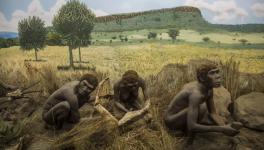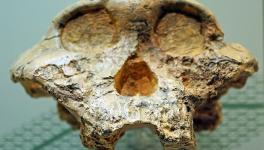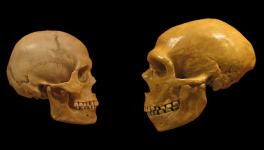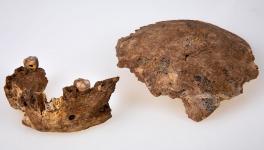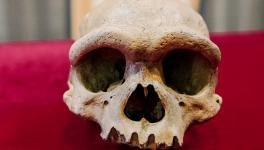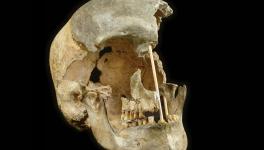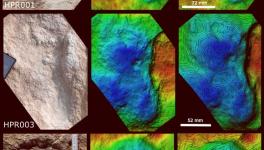When did Modern Humans and Neanderthals Diverge?
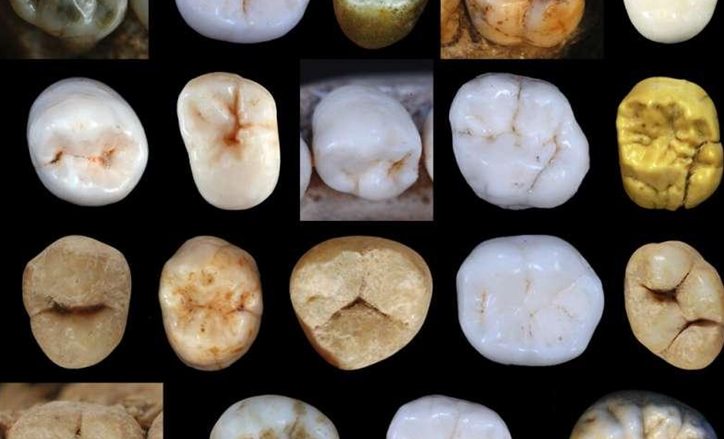
Image Courtesy: Phys.org
The closest prehistoric relative of the Homo sapiens (modern humans) are the Neanderthals. There has been intense debate on the issue of the divergence of these two species. Now, a latest study, published in Science Advances, says that the divergence occurred much before than thought previously.
The research took the estimates of rate of dental evolution across different hominin species, focusing on Neanderthals. The estimates show that teeth of hominins found in the Sima de Ios Huesos, Spain, diverged from the modern humans at a much earlier period.
Sima de Ios Huesos is a cave in the Atapuerca Mountains in Spain, where fossils of almost 30 hominids have been found. According to previous studies’ findings, this cave site dates around 4, 30,000 years ago, which makes it one of the oldest and largest sites of human remains. Both anatomical and genetic analyses have shown that the hominin fossils in the cave are more close to the Neanderthals.
Ancient DNA analysis generally indicates that Neanderthals and the modern humans diverged around 3,00,000 to 5,00,000 years back. But, the anatomical and genetic Neanderthal similarities observed in the Sima hominins, shows that this timeline is not compatible.
Also Read: Genetic Variations in Neanderthals can Explain Human Brain Evolution
The Study
The research focused on finding the rate of dental evolution. It used quantitative data for estimating the evolution of dental shape across hominin species. The research assumed different divergent times between modern humans and Neanderthals.
The finding of the research observed that Sima de los Huesos hominins had very small posterior teeth (premolars and molars) which show significant similarities with classic Neanderthals. The small and Neanderthal-looking teeth of these hominins, most likely evolved from the larger and more primitive teeth present in the common ancestor of both Neanderthals and modern humans.
Across hominin species, dental shape has evolved at very similar rates, including those with very reduced teeth and those with very expanded teeth. By finding the evolutionary rate of the dental evolution, it could be assessed when Neanderthals and humans could have diverged.
Both the modern humans and the Neanderthals had a common ancestor which had a different teeth morphology. When the divergence took place, teeth shape evolution also took place at a similar rate in these two species. If, the divergence had been as recent as is currently thought of, then the dental evolution would have shown a rapid rate. The current research found that this was not the case. The dental evolution rate was very slow. From the statistical analysis, the researchers have estimated that the divergence took place nearly 8,00,000 years back.
Dr. Aida Gomez-Robles of Anthropology department of University College of London who is also the author of the study says—“Any divergence time between Neanderthals and modern humans younger than 800,000 years ago would have entailed an unexpectedly fast dental evolution in the early Neanderthals from Sima de los Huesos."
Also Read: Socialisation Was Driving Force in Shaping Modern Human Face
The study further says, "There are different factors that could potentially explain these results, including strong selection to change of teeth of these hominins or their isolation from other Neanderthals found in mainland Europe. However, the simplest explanation is that the divergence between Neanderthals and modern humans was older than 800,000 years. This would make the evolutionary rates of the early Neanderthals from Sima de los Huesos roughly comparable to those found in other species. The Sima people's teeth are very different from those that we would expect to find in their last common ancestral species with modern humans, suggesting that they evolved separately over a long period of time to develop such stark differences.”
The study is significant from the anthropological point of view and it is hoped that these findings would shed new light on human evolution.
Get the latest reports & analysis with people's perspective on Protests, movements & deep analytical videos, discussions of the current affairs in your Telegram app. Subscribe to NewsClick's Telegram channel & get Real-Time updates on stories, as they get published on our website.









